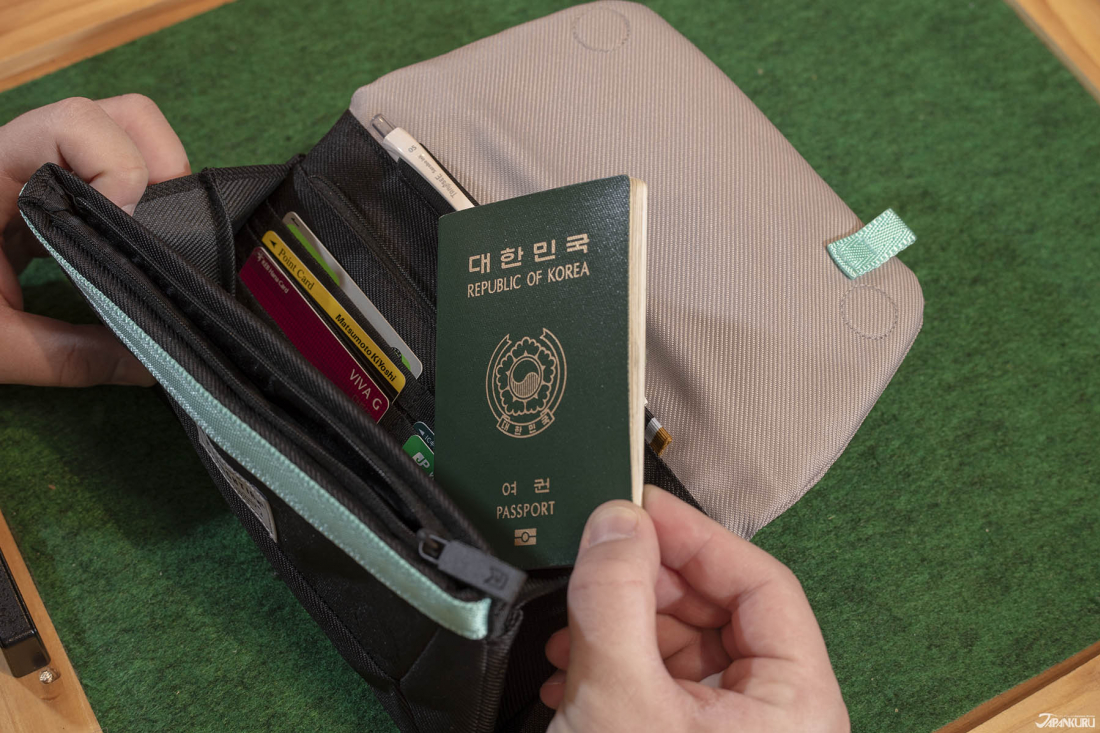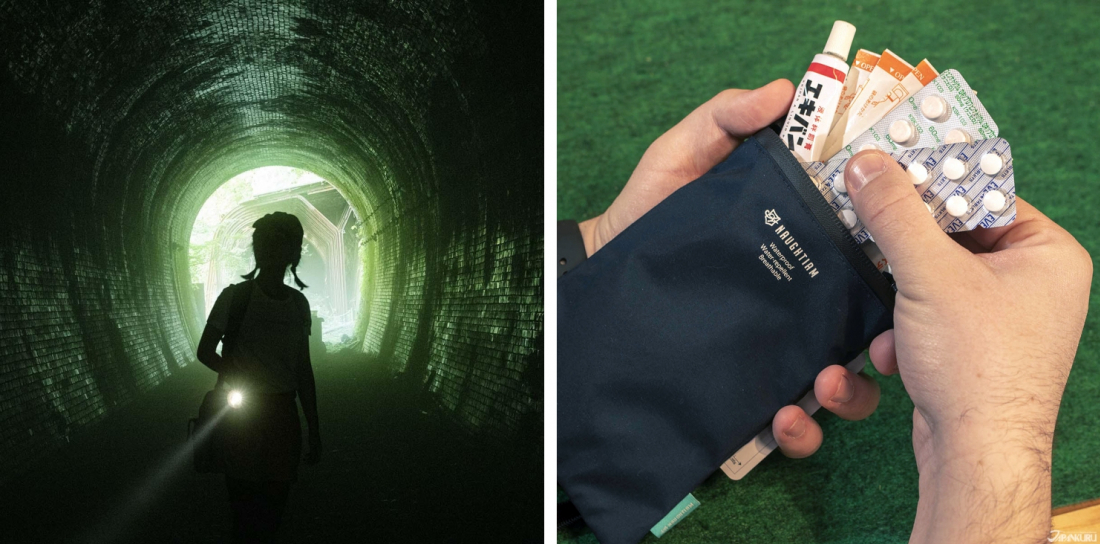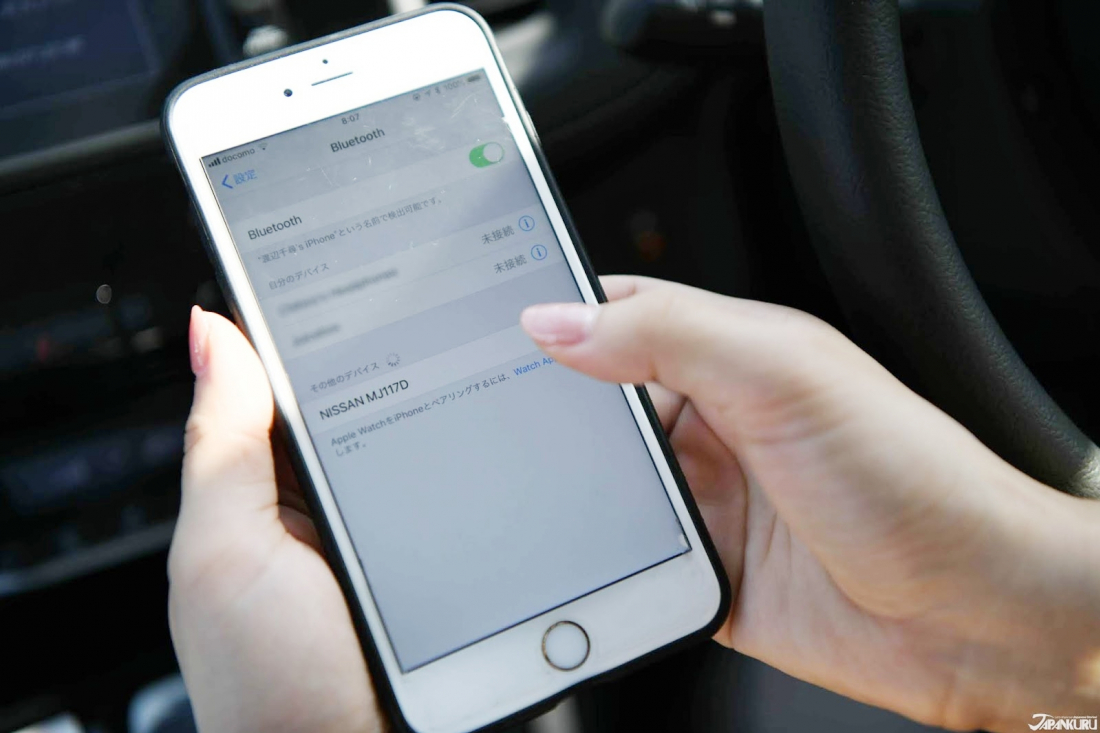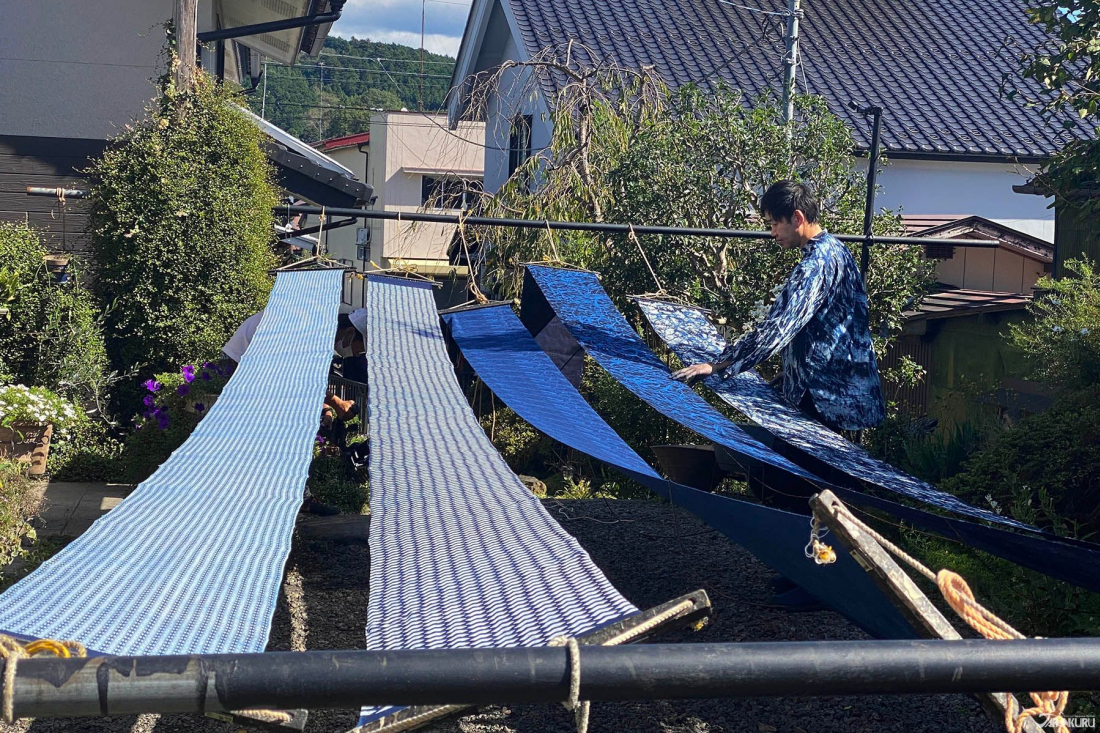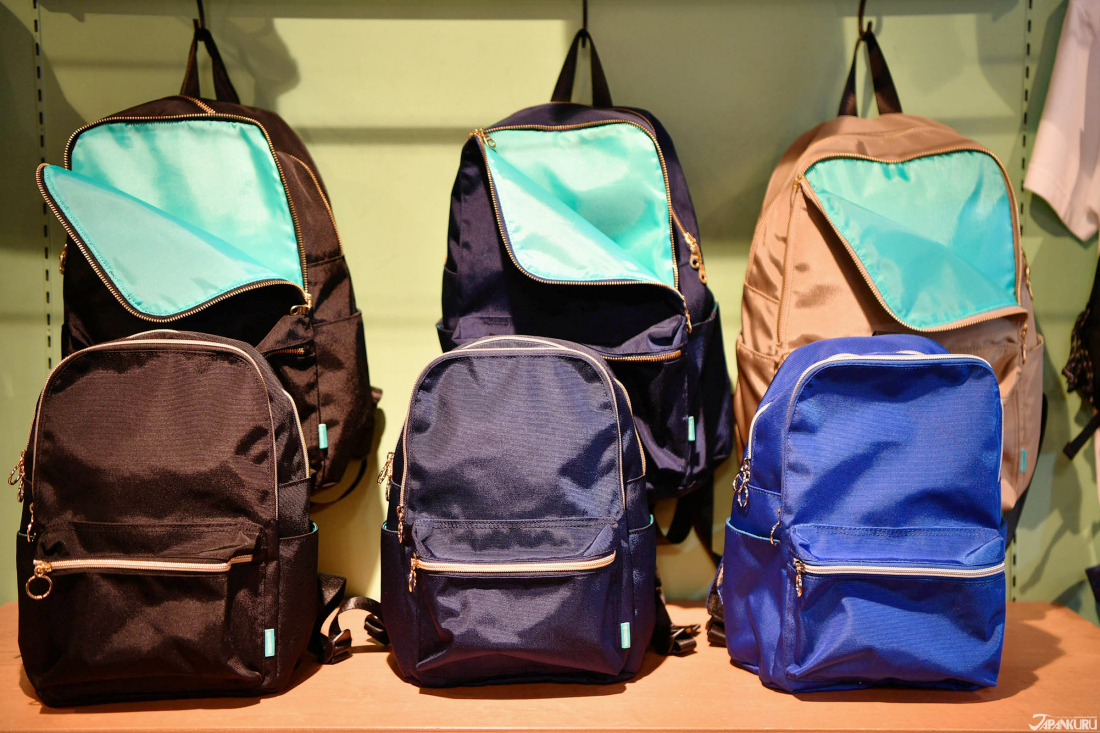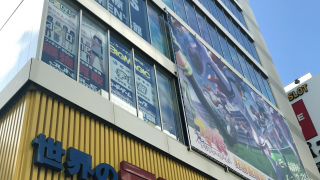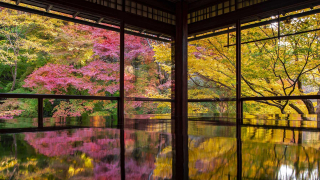Must-Have Japanese Disaster Kit Items to Prepare You for Any Emergency
| Nationwide Culture Typhoon | 2022.09.08 |
Prone to typhoons and earthquakes, when it comes to putting together a disaster kit and preparing for emergencies, Japan is king.
Emergency Preparedness in Japan
Japan is a beautiful country, thanks in part to the many volcanic mountains like Mount Fuji, and long coastlines along the waters of the Pacific Ocean - but it all comes with some less fun side effects too: earthquakes, typhoons, and their aftereffects too. These natural disasters are a fact of life in Japan, but that doesn’t mean you have to sit around worrying about them all day! Instead, pack up your very own disaster survival kit, and you’ll be well-prepared for whatever comes next. Whether you're new to living in Japan, or are just worried about natural disasters in your home country, putting together a bag for emergencies can even be pretty fun, when you get to look for Japanese must-haves and even some nifty gadgets. Not sure what you might need to buy? Here are a few of the disaster survival basics, and some extras we think you might like!
Your Basic Disaster Kit
➡ Food & Water
When disaster strikes, even the simplest things can become an issue if you're not prepared, and that includes basics like food and water! Maybe the power went out for an hour and your electric stove won't turn on in time for dinner, or perhaps you end up at an evacuation center waiting for food. Whatever the issue may be, the last thing you want is to be stuck hungry and thirsty! And if you're worried about the broader situation, a tasty meal can be just the thing to cheer you up! Water and some shelf-stable food are a must for any disaster kit, and Japanese people tend to go for meals like packs of instant curry and traditional yokan (a sugary, calorie-dense, and surprisingly long-lasting jelly-like sweet). Canned food works fine too, as does the kind of dehydrated instant food often made for camping! If you have a car, there are even gadgets you can buy ahead of time to do a little cooking with your vehicle's power.
Things to pack:
plenty of bottled water, shelf-stable food and snacks, disposable or compact plates and utensils
We recommend:
・This fancy Japanese hamburg steak-in-a-can from Muranokojiya, plus some cutlery to eat it with (disposable chopsticks or a titanium fork and spoon)!
・This handy can warmer from Grapee, which uses a little candle to heat your food!
・These instant curry packs also from Grapee, made from a recipe perfected by a long-beloved Osaka chef.
・These canned Kumamoto mandarin slices from Irodori, for a special sweet treat.
・This electric kettle made for cars from Car Revolution Style. (They have a rice cooker, too!)
・The sturdy and lightweight Sierra Cup from Nature Tones.
Things to pack:
plenty of bottled water, shelf-stable food and snacks, disposable or compact plates and utensils
We recommend:
・This fancy Japanese hamburg steak-in-a-can from Muranokojiya, plus some cutlery to eat it with (disposable chopsticks or a titanium fork and spoon)!
・This handy can warmer from Grapee, which uses a little candle to heat your food!
・These instant curry packs also from Grapee, made from a recipe perfected by a long-beloved Osaka chef.
・These canned Kumamoto mandarin slices from Irodori, for a special sweet treat.
・This electric kettle made for cars from Car Revolution Style. (They have a rice cooker, too!)
・The sturdy and lightweight Sierra Cup from Nature Tones.
➡︎ Other Basic Needs
It’s important to prepare for a variety of emergency situations in just one bag, so after taking care of the very basics like food and water, it’s time to move on to other necessities! Nobody wants to be stuck in the dark when the power goes out, so it’s a good idea to have a flashlight, and a candle with a lighter isn’t a bad addition either! A basic first aid kit is a must-have for any minor cuts or scrapes, and during these days living with COVID-19, many will recommend extra hand sanitizer and masks, too. A toothbrush and some soap will keep you feeling clean and comfortable (many authorities will recommend packing a “disposable toilet” too), while a lightweight blanket does wonders if the heat goes out and you’re feeling chilly!
Things to pack:
a lighter/matches/candles, a flashlight or lamp, a first aid kit, masks and hand sanitizer, tissues, a toothbrush and other basic toiletries, a portable toilet, a lightweight blanket
We recommend:
・This cute and compact Carry the Sun portable lamp from Grapee.
・A pocket or space blanket from Yosemite, plus a convenient headlamp.
・This USB rechargable plasma lighter from Delta Camp Store.
・An eco-friendly disposable toothbrush from Arigato Giving.
・A bar or bottle of Dr. Bronner's famously multipurpose soap from Neuve A.
Things to pack:
a lighter/matches/candles, a flashlight or lamp, a first aid kit, masks and hand sanitizer, tissues, a toothbrush and other basic toiletries, a portable toilet, a lightweight blanket
We recommend:
・This cute and compact Carry the Sun portable lamp from Grapee.
・A pocket or space blanket from Yosemite, plus a convenient headlamp.
・This USB rechargable plasma lighter from Delta Camp Store.
・An eco-friendly disposable toothbrush from Arigato Giving.
・A bar or bottle of Dr. Bronner's famously multipurpose soap from Neuve A.
➡ Communication/Technology
In this day and age, it’s easy to feel a little helpless when our technology fails us, but it’s vitally important to keep in contact with the rest of the world even when the power goes out. Even if you never listen to the radio, make sure to pack one to listen out for public announcements! Of course, being able to use your phone and other electronics even during an emergency is ideal, so don’t forget spare batteries and a mobile charger. In addition, you’ll want to be able to keep track of emergency information even if your phone dies, so you might have to go analog - bring a pen and paper too.
Things to pack:
a radio, a portable charger, batteries, writing tools, a notebook, permanent markers
We recommend:
・This amazing multipurpose hand-crank radio from Kaigai Denki, which comes with flashlight and charging features too!
・A high-capacity mobile charger from Sofmap to recharge your phone multiple times over, or a charger with solar panels instead!
・This convenient battery case, also from Sofmap.
・This rather kawaii pen and notebook set from Delfonics.
・These colorful permanent markers from Mark's.
Things to pack:
a radio, a portable charger, batteries, writing tools, a notebook, permanent markers
We recommend:
・This amazing multipurpose hand-crank radio from Kaigai Denki, which comes with flashlight and charging features too!
・A high-capacity mobile charger from Sofmap to recharge your phone multiple times over, or a charger with solar panels instead!
・This convenient battery case, also from Sofmap.
・This rather kawaii pen and notebook set from Delfonics.
・These colorful permanent markers from Mark's.
➡︎ For Comfort and Safety
What else do you need that you probably haven’t thought of yet? Well, a whistle for one, just in case you need to call for help! And some basic compact tools are good to have in a pinch, anyway, so you can always just store a set in your disaster kit. Aside from that, we always recommend packing up a comfy change of clothes and a pair of sandals, so you don’t get stuck evacuating in your pajamas, or full cosplay for that matter.
Things to pack:
a whistle, spare clothes, plastic bags, sandals, gloves, a compact tool kit
We recommend:
・This basic whistle from Digimart, or this lightweight plastic one.
・These outdoor gloves from And Wander.
・This multitool from Yosemite.
・These comfy sweats and hoodies from Universal Overall.
・These cozy sock options from Claska.
・A pair of sandals from Madras.
Things to pack:
a whistle, spare clothes, plastic bags, sandals, gloves, a compact tool kit
We recommend:
・This basic whistle from Digimart, or this lightweight plastic one.
・These outdoor gloves from And Wander.
・This multitool from Yosemite.
・These comfy sweats and hoodies from Universal Overall.
・These cozy sock options from Claska.
・A pair of sandals from Madras.
Optional Add-Ons
➡︎ Dealing with the Heat
Japan is on another level when it comes to surprising conveniences, gadgets, and other novelties you never knew you needed, so it should be no surprise that we’ve got some extra suggestions to add to your disaster kit. Do you need these things? Maybe not. Will you want to add them to your bag anyway? We think so!
Summer vacation should be a time for carefree fun, but unfortunately, the Earth’s crust doesn’t always cooperate, and earthquakes can still come during summer break. Sometimes the warm weather even becomes the cause of floods and typhoons! To stay cool even at the height of summer, whether you’re shopping in Shinjuku or hanging out in an evacuation center, Japan has some pretty cool (literally) items available.
Things to pack:
a portable cordless fan, cooling towels, cooling ice packs
We recommend:
・This durable and rechargeable fan from Delta Camp Store.
・This fold-up neck cooler with cooling pads from Grape.
・This ring-shaped ice pack neck cooler from Muranokojiya.
・This cooling fan-equipped jacket from Kyouen (a favorite among Japanese construction workers), and some cooling arm covers to complete the look.
・This "hakka" peppermint oil from Good Bouldering, made to keep you cool and keep bugs away, too.
Summer vacation should be a time for carefree fun, but unfortunately, the Earth’s crust doesn’t always cooperate, and earthquakes can still come during summer break. Sometimes the warm weather even becomes the cause of floods and typhoons! To stay cool even at the height of summer, whether you’re shopping in Shinjuku or hanging out in an evacuation center, Japan has some pretty cool (literally) items available.
Things to pack:
a portable cordless fan, cooling towels, cooling ice packs
We recommend:
・This durable and rechargeable fan from Delta Camp Store.
・This fold-up neck cooler with cooling pads from Grape.
・This ring-shaped ice pack neck cooler from Muranokojiya.
・This cooling fan-equipped jacket from Kyouen (a favorite among Japanese construction workers), and some cooling arm covers to complete the look.
・This "hakka" peppermint oil from Good Bouldering, made to keep you cool and keep bugs away, too.
➡︎ Trying Out “Tenugui”
One survival kit addition you're certainly not likely to find outside of Japan is the tenugui (手ぬぐい) - a long rectangle of woven cotton fabric (about 35 x 90 cm), often printed with colorful patterns as souvenirs all around Japan. But when it comes to putting together your emergency bag, these simple items come in handy in lots of ways! The absorbent but compact cotton cloths can take the place of a much bulkier towel, and then dry out much more quickly thanks to the thinner fabric. They're popular in the summer in place of a head kerchief, and are sometimes folded into narrow strips to tie around the forehead to keep sweat at bay, or even kept wet as a cooling towel. When it's cold, they can be used in place of a light scarf! They can wipe up spills, and be used as an impromptu pot holder or picnic mat, and if absolutely necessary, they can be torn into strips for makeshift string or rope. Tie one onto your pack, and you'll recognize it instantly!
Things to pack:
one or more tenugui!
We recommend:
・These simple tenugui dyed in classic patterns from The Stables.
・These colorful tenugui stenciled with seasonal motifs from Nakagawa Masashichi.
・These traditional tenugui hand-dyed in Kyoto from Seisuke 88.
Things to pack:
one or more tenugui!
We recommend:
・These simple tenugui dyed in classic patterns from The Stables.
・These colorful tenugui stenciled with seasonal motifs from Nakagawa Masashichi.
・These traditional tenugui hand-dyed in Kyoto from Seisuke 88.
Putting It All Together
Once you have everything you need for your disaster survival kit ready to go, all you have to do is have it packed and stored in a convenient location, so you can be ready to go at a moment's notice. But to do that, you need a bag to store it all in! Most experts will recommend a backpack for this purpose, since it's easier to carry a big bag on your back, and it leaves your hand's free for emergencies. If possible, you'll also want to use one that's fairly brightly colored - helpful if you ever need to be rescued, or just want to be safely visible when it's dark and rainy. In Japan, people often use old school bags, or set aside a backpack for their "go bag" when it's deemed too scruffy for daily use.
Finally, the last thing before you head out the door, bring your passport! It's a good idea to make some copies of your most important documents and keep them in your disaster kit at all times, but as a foreigner in Japan, your passport may just come in handy.
Things to pack:
a sturdy backpack, important documents/copies
We recommend:
・These colorful handmade backpacks from sellers at Iichi.
・These durable backpacks from Porter.
Ideally, you'll never have the need to grab your disaster kit and rush to safety while in Japan, or wherever you live, but in the event of a disaster, there's nothing more reassuring than being properly prepared! Just keep calm, listen to orders issued by the local authorities, and make the most of everything you packed in advance. For more information and Japanese disaster advice in English, check out the links below!
Finally, the last thing before you head out the door, bring your passport! It's a good idea to make some copies of your most important documents and keep them in your disaster kit at all times, but as a foreigner in Japan, your passport may just come in handy.
Things to pack:
a sturdy backpack, important documents/copies
We recommend:
・These colorful handmade backpacks from sellers at Iichi.
・These durable backpacks from Porter.
Ideally, you'll never have the need to grab your disaster kit and rush to safety while in Japan, or wherever you live, but in the event of a disaster, there's nothing more reassuring than being properly prepared! Just keep calm, listen to orders issued by the local authorities, and make the most of everything you packed in advance. For more information and Japanese disaster advice in English, check out the links below!
Japan Meteorological Agency Earthquake/Typhoon Info ・ Japan National Tourism Organization Safety Tips ・ NHK World News (Japanese Public Broadcasting)
(Check your local embassy in Japan, too!)
- Basic Info
-
Name Disaster Kit Items (防災グッズ)
- Columnist
-
- World Shopping
Looking for the latest trends and products coming out of Japan?
SHOW COLUMN
We've got you covered!
Homepage | Facebook | Twitter | Instagram-
- 0SHOPPING
 0
0
 3 Big New Trends in Japanese Fashion | Spring 2023by World Shopping 2023.03.30
3 Big New Trends in Japanese Fashion | Spring 2023by World Shopping 2023.03.30 - 0SHOPPING
 0
0
 Why Does Japan Start School in April? (And Why Do Jobs and Everything Else Follow Along?)by World Shopping 2023.03.29
Why Does Japan Start School in April? (And Why Do Jobs and Everything Else Follow Along?)by World Shopping 2023.03.29 - 0SHOPPING
 0
0
 3 Must-Haves For the Perfect Cherry Blossom Viewing Experienceby World Shopping 2023.03.17
3 Must-Haves For the Perfect Cherry Blossom Viewing Experienceby World Shopping 2023.03.17
- Related Article









